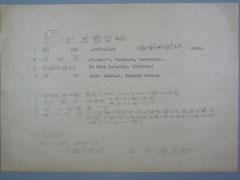Stolen Years: Australian prisoners of war - At risk at sea
All through the war, groups of prisoners were transported around Japan’s captured territories, usually in small, slow, overcrowded merchant ships. Conditions aboard them were appalling. Even worse, over a thousand Australian prisoners of war died when ships carrying them were torpedoed by Allied submarines. The Japanese did not mark their ships or advise the Allies of their movements. The ships sunk included the Montevideo Maru (July 1942), the Kachidoki Maru and the Rokyu Maru (September 1944).
The band of the 2/22nd Battalion on Anzac Day 1941, at Rabaul. Most of these men, Salvation Army bandsmen, would be dead before the end of 1942, either killed at Tol or when the Montevideo Maru was sunk. Of the 24 men who enlisted in the band, only one survived the war.
Prisoners of war are rescued from the South China Sea in September 1944.
An oil-soaked and sun-burned but relieved prisoner is hauled from the sea by American sailors after spending three days in the water following the sinking of the Rokyu Maru off China in September 1944.

This is one of the death certificates issued for prisoners of war who died when the transport Tamahoko Maru was torpedoed off Nagasaki on 24 June 1944. Private Gregory Wardlaw, 2/40th Battalion, from Tasmania, was killed when a torpedo from an American submarine hit the ship: “The ship immediately foundered; rescue impossible, he drowned”.
Prisoners of the Japanese
- Surrender
- Changi
- The Burma-Thailand Ralway
- Survival
- Ambon & Hainan
- Sandakan
- Outram Road
- Nurses
- Civilian internees
- Witness
- War Crimes


